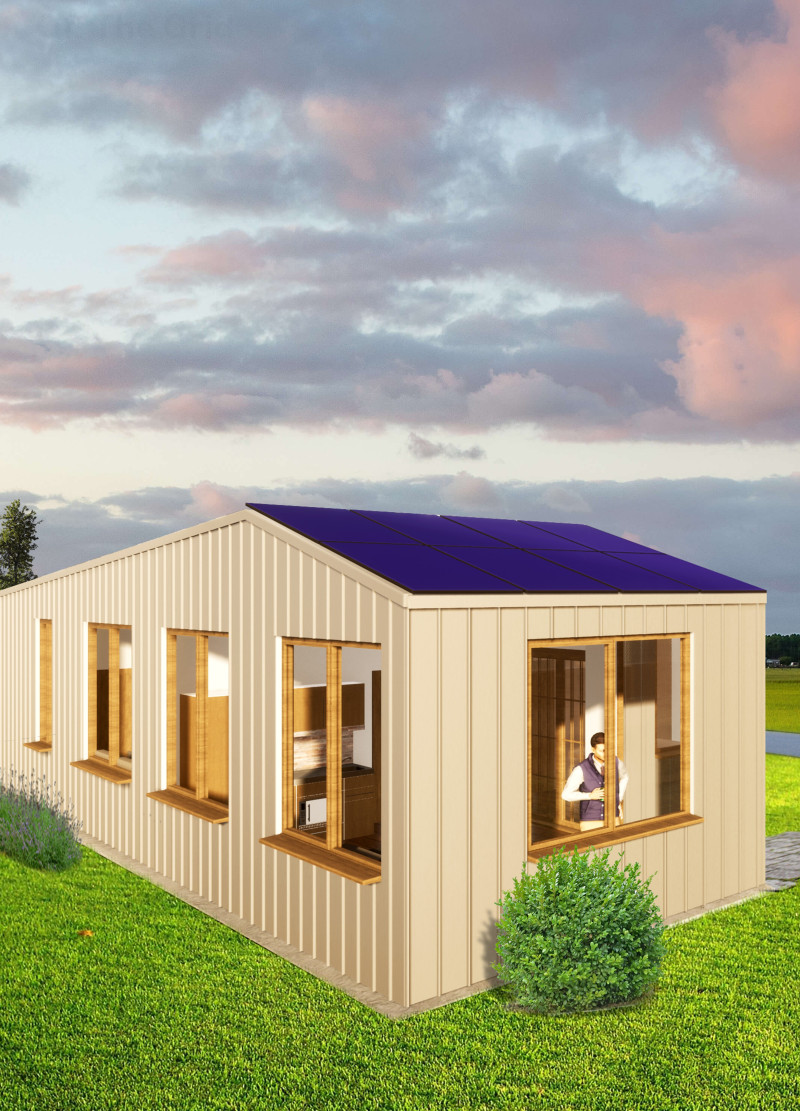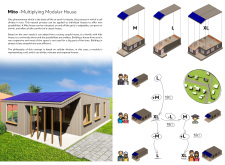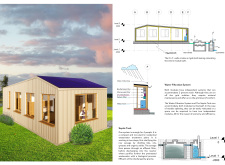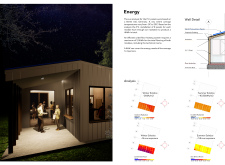5 key facts about this project
The Mito - Multiplying Modular House offers a fresh take on residential living through a design inspired by the natural process of cell division. Located in an environment that values sustainability, the house functions as a flexible and adaptable space. It can expand or contract depending on the changing needs of the occupants. This focus on functionality and environmental care reshapes the way individuals can interact with their living spaces over time.
Modularity
The design features two independent modules that can either serve as one complete living unit or function as two separate homes. This dual-module system allows easy relocation, minimizing the typical environmental impact of conventional housing. When the modules are moved, only a concrete foundation and an area for the septic system remain behind, illustrating a commitment to responsible development practices.
Technical Components
Self-sufficiency is key to the modules. Each one is equipped with systems that support off-grid living. A Water Filtration System and septic tank manage waste effectively, ensuring clean water and proper sanitation. The septic system employs a compact, non-electric approach to treat wastewater biologically. This process separates impurities before discharging treated water, highlighting the design’s attention to functionality and ecological awareness.
Energy Strategy
Energy efficiency plays an important role in the overall design. Analysis of solar potential in Berlin, Germany, informs the energy strategy. Each module can accommodate eight photovoltaic panels, generating around 4 kWh. This output is sufficient for a household of three to four people. Additionally, an underfloor heating system requires only 2.5 kWh, which enhances comfort while maintaining low energy consumption.
Materiality
Cross-Laminated Timber (C.L.T.) is used for building the modules. This material provides strength and stability while aligning with sustainability goals. Utilizing C.L.T. allows for prefabrication, which reduces waste and makes construction more efficient. This choice supports the overall aim of creating a residential space that is both practical and environmentally conscious.
Mito's design responds directly to modern housing challenges. It facilitates adaptability, sustainability, and efficient use of resources. Through its structural features and integrated systems, it presents a clear vision for future housing solutions, striking a balance between practicality and thoughtful design.






















































